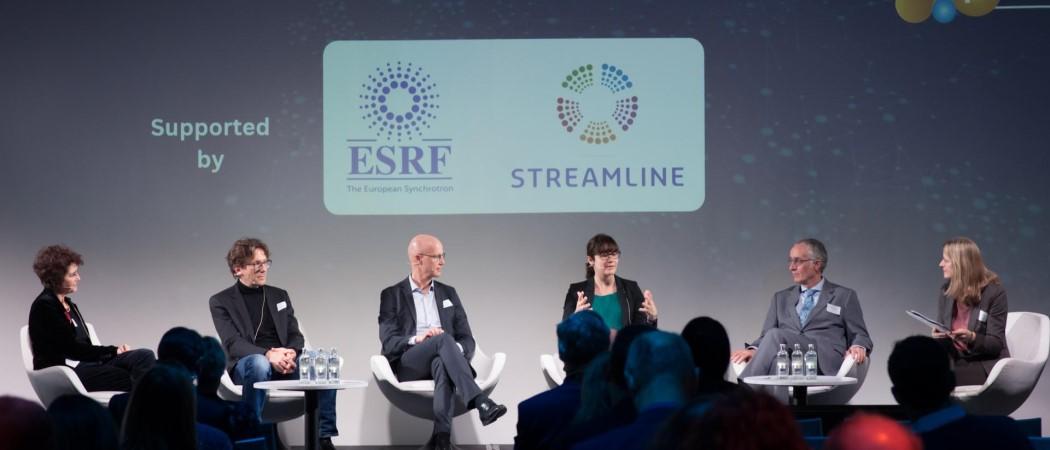A major upgrade to the brilliance of the European Synchrotron Radiation Facility paves the way for breakthroughs in environmental and energy science, materials and healthcare

A major upgrade to the European Synchrotron Radiation Facility (ESRF) has equipped scientists with innovative tools to address health issues, environmental problems, energy demands and other global challenges, according to speakers at the Science|Business Annual Conference. Having increased the performance of X-ray beams by a factor of 100 in terms of brilliance and coherence, the fourth-generation synchrotron, ESRF-EBS (Extremely Brilliant Source), is opening up access to previously unattainable data.
That should bring benefits to both academia and industry. In particular, enhanced X-ray beams, along with new beamlines, enable new experiments and significant gains in resolution or rapidity for existing experiments, Michael Krisch, interim director of research for life sciences, chemistry and soft matter science at ESRF, told the conference. The upgraded facility produces “the most brilliant synchrotron X-rays in the world,” he added.
As a result, users can collect more data of better quality and higher complexity, supporting a wide range of applications including the study of SARS-CoV-2 virus proteins structure, innovative solutions for enzymatic plastic recycling and the acceleration of new pharmaceuticals development. For example, the technology can be used to obtain images of human organs with an impeccable level of precision, Krisch claimed. “What we have seen since we started in 2020 is a tsunami of mind-blowing results,” he added, highlighting how the extensive screening of materials, combined with machine learning algorithms, is revolutionising material science.
Spanning over 2019-2024, the facility upgrade was supported by a Horizon2020-funded project called Streamline with a €5 million budget. As part of the upgrade, ESRF has renewed 27 out of 30 experimental stations, established support labs, and engaged in data-analysis and data-management programmes, Krisch said, stressing that ESRF relied heavily on existing infrastructure to ensure that the upgrade was completed in a cost-effective and energy-efficient manner.
“Like a wonderful microscope”
Having used the facility to work on her project focused on catalysis, researcher and ERC grant holder Marie-Ingrid Richard compared X-ray beams to “a wonderful microscope”, which enable her to observe catalysis in action, and obtain high-resolution images without damaging materials. “My project is still ongoing, and, without ESRF and EBS upgrade, it would not be possible,” she said.
Richard also highlighted the industrial applications of synchrotrons, saying that Toyota and STMicroelectronics are among the major companies she is working with to discover optimal techniques for developing materials.
ESRF now offers a new high-throughput X-ray diffraction service, which was co-designed with chemicals company BASF. Start-up Momentum Transfer provides an end-to-end service to enable companies to use this new capability to harvest X-ray data from samples held in libraries. At the conference, Bernd Hinrichsen, chief executive officer and co-founder of Momentum Transfer, described how his company has created a “revolutionary way” to characterise materials with the use of X-ray beams. “We got fantastic data, and what is phenomenal is the scalability of this,” he said.
Similarly, in the life sciences sector, collaboration between ESRF and the European Molecular Biology Laboratory (EMBL), has had a huge impact, according to Edith Heard, Director General at EMBL. For example, the decades of work and data collected at synchrotrons to understand protein structures contributed to the development of AlphaFold, an AI tool used to predict protein structures. “It was thanks to the drive of research combined with research infrastructure that this dream came true,” she said. Heard added that scientists from around the world travel to ESRF and EMBL facilities to conduct research in life sciences.
Removing various bottlenecks
The wide range of potential applications means ESRF can’t meet all of the demand for its infrastructure. Acknowledging the capacity constraints, Krisch said that ESRF is looking into a new access scheme to accommodate different types of users.
Participants also discussed attracting investors to potentially shift from public financing to a co-investment model. “We see a change in the kind of support we think should be given from a public purse,” said Michael Arentoft, head of unit for open science and research infrastructures at the European Commission’s Directorate-General for Research and Innovation. The Commission sets priorities for different types of research infrastructure on a case-by-case basis, and light source infrastructures are among those considered attractive for industry, Arentoft explained. The Commission is collaborating across FP10, the next seven-year EU research programme, to ensure that research infrastructures, fundamental research and applied research work in continuum and nourish each other, he added.
To enable research infrastructure, academia and industry to work together to develop cutting-edge technology, Krisch said they need to speak the same language and research facilities need to be adapted to the specific needs of industry. Heard called for a “virtuous cycle” where successful research leads to new collaborations with industry, adding that flexibility and speed are crucial.
Other challenges revolve around providing adequate training and establishing effective data sharing practices. Heard stressed it’s essential to train researchers to both use data and manage it at multiple levels.
In conclusion, Krisch stated that realising the potential of the upgraded research infrastructure to solve societal, economic and industrial challenges largely relies on the next generation of researchers “hungry for a better future”.




 A unique international forum for public research organisations and companies to connect their external engagement with strategic interests around their R&D system.
A unique international forum for public research organisations and companies to connect their external engagement with strategic interests around their R&D system.